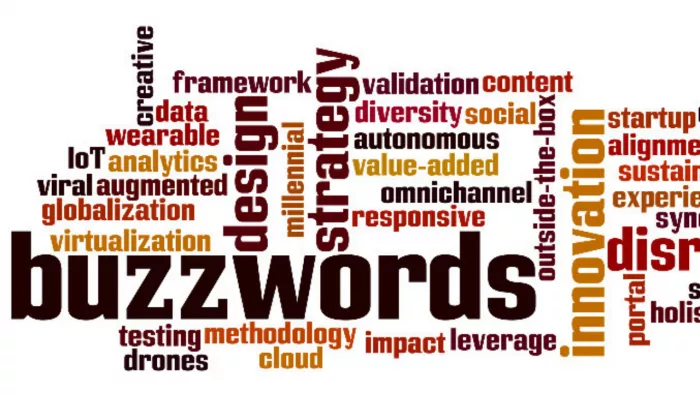
The modern workplace has no shortage of shiny phrases. Every quarter seems to bring a new favorite: “digital transformation,” “agile mindset,” “synergy,” “AI-powered,” “customer obsession.” These words enter meetings with the weight of big promises, but once the slides fade and the applause dies down, the reality underneath is rarely glamorous. What often follows is not a revolution, but a heavier to-do list.

The Allure of Fresh Language
Buzzwords thrive because they simplify complex ambitions into something catchy. Saying “we’re leveraging AI for growth” sounds easier than explaining a three-year overhaul of data pipelines, staff training, and ethical guidelines. Leaders use these phrases to inspire, motivate, or sometimes mask uncertainty. They give teams the sense of being part of something forward-thinking, even when the details are still blurry.
But language has power. Once a phrase catches on, it sets expectations. People nod along in town halls, investors perk up, and suddenly, employees are tasked with turning abstract slogans into daily routines.
What Happens After the Announcement
When a company declares itself “agile,” it doesn’t stop at hanging posters on the wall. It means restructuring teams, rewriting job roles, and re-training staff who already feel stretched thin. “Digital transformation” often translates into long nights migrating systems, fixing bugs no one anticipated, and explaining to clients why the new platform looks suspiciously like the old one but with more login issues.

Buzzwords act like a starting gun, but the race is run by ordinary people with limited hours in their week. Behind every promise of innovation lies a pile of tasks that rarely fit neatly into an employee’s schedule.
The Hidden Cost of Buzzword Culture
Research on workplace productivity shows that employees already spend almost half their time on tasks that don’t directly contribute to their core responsibilities. Adding initiatives dressed in buzzword clothing only deepens that burden. A study by Harvard Business Review highlighted that while 70% of companies claim to be “customer-centric,” fewer than 30% of employees feel they have the tools or freedom to actually make customer-driven decisions.
The gap between language and lived reality is where stress grows. Teams juggle old responsibilities with new demands, and what was once pitched as a simplification often creates more layers of reporting, compliance, and review cycles.
Why We Still Fall for It
If buzzwords create so much work, why do they survive? Partly because they offer hope. They let organizations dream out loud, even if execution stumbles behind the rhetoric. They also act as shorthand in industries that move too quickly for full explanations. It’s easier to say “we’re AI-ready” than to unpack years of messy trial and error.
On a human level, buzzwords also make us feel included. Speaking the same lingo builds a sense of belonging, even if everyone is silently wondering what the phrase really means in practice.
The Quiet Truth Beneath the Hype
Stripping away the packaging, buzzwords usually point to real problems worth solving. “Digital transformation” isn’t meaningless, it reflects the need to keep pace with technology. “Agile” points to the desire for flexibility in a fast-changing market. The issue isn’t the intent but the delivery.
And that’s where the irony lives. The grand words promise less friction, more efficiency, and a brighter future. But getting there is slow, unglamorous work: meetings that run long, spreadsheets that grow heavier, and employees who must balance vision with reality.
Closing Reflection
Every buzzword starts as a story of progress. But stories don’t move projects forward, people do. And for those people, the true experience of buzzword culture is not the flash of inspiration in a press release. It is the steady, often invisible labor that follows. Behind every catchy phrase is someone working late, adjusting to new processes, or figuring out how to deliver results in a landscape where the words change faster than the work itself.




Comments